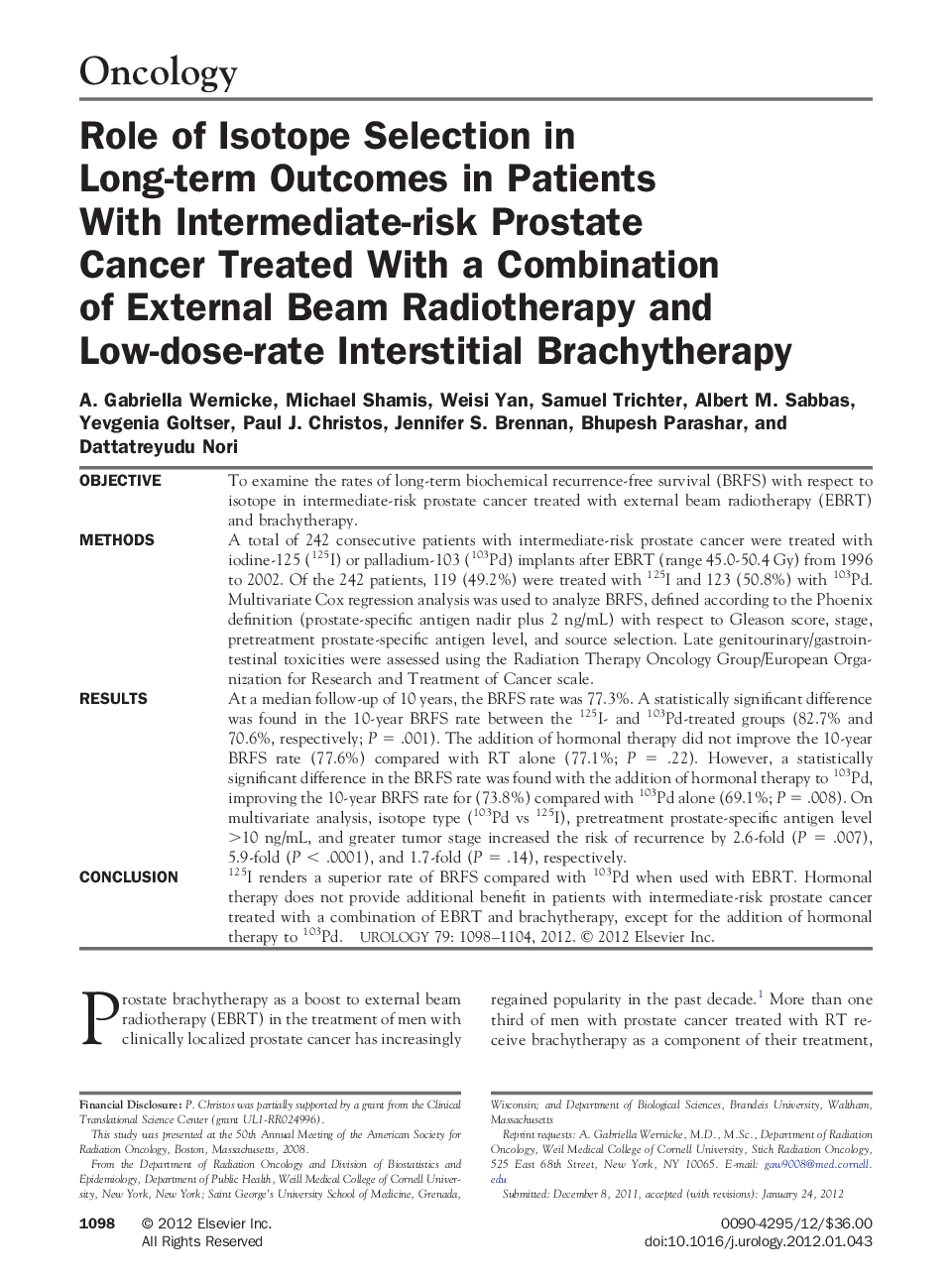| کد مقاله | کد نشریه | سال انتشار | مقاله انگلیسی | نسخه تمام متن |
|---|---|---|---|---|
| 3901414 | 1250353 | 2012 | 7 صفحه PDF | دانلود رایگان |

ObjectiveTo examine the rates of long-term biochemical recurrence-free survival (BRFS) with respect to isotope in intermediate-risk prostate cancer treated with external beam radiotherapy (EBRT) and brachytherapy.MethodsA total of 242 consecutive patients with intermediate-risk prostate cancer were treated with iodine-125 (125I) or palladium-103 (103Pd) implants after EBRT (range 45.0-50.4 Gy) from 1996 to 2002. Of the 242 patients, 119 (49.2%) were treated with 125I and 123 (50.8%) with 103Pd. Multivariate Cox regression analysis was used to analyze BRFS, defined according to the Phoenix definition (prostate-specific antigen nadir plus 2 ng/mL) with respect to Gleason score, stage, pretreatment prostate-specific antigen level, and source selection. Late genitourinary/gastrointestinal toxicities were assessed using the Radiation Therapy Oncology Group/European Organization for Research and Treatment of Cancer scale.ResultsAt a median follow-up of 10 years, the BRFS rate was 77.3%. A statistically significant difference was found in the 10-year BRFS rate between the 125I- and 103Pd-treated groups (82.7% and 70.6%, respectively; P = .001). The addition of hormonal therapy did not improve the 10-year BRFS rate (77.6%) compared with RT alone (77.1%; P = .22). However, a statistically significant difference in the BRFS rate was found with the addition of hormonal therapy to 103Pd, improving the 10-year BRFS rate for (73.8%) compared with 103Pd alone (69.1%; P = .008). On multivariate analysis, isotope type (103Pd vs 125I), pretreatment prostate-specific antigen level >10 ng/mL, and greater tumor stage increased the risk of recurrence by 2.6-fold (P = .007), 5.9-fold (P < .0001), and 1.7-fold (P = .14), respectively.Conclusion125I renders a superior rate of BRFS compared with 103Pd when used with EBRT. Hormonal therapy does not provide additional benefit in patients with intermediate-risk prostate cancer treated with a combination of EBRT and brachytherapy, except for the addition of hormonal therapy to 103Pd.
Journal: Urology - Volume 79, Issue 5, May 2012, Pages 1098–1104